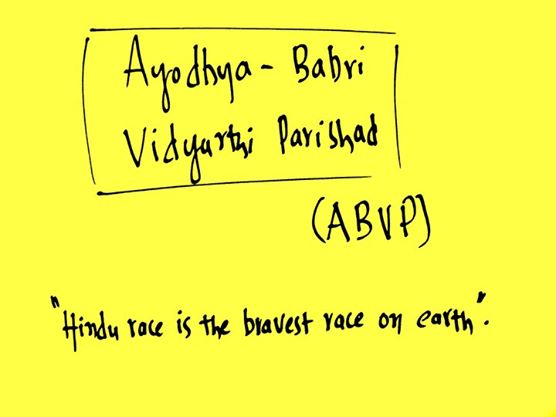Deivendra Kumar A
 It was during my post-graduation studies in journalism at the Central University of Tamil Nadu in Thiruvarur that one of my professors enquired about my view on the recent movie Asuran (2019), directed by ace filmmaker Vetrimaaran. Further, he asked me about the recent buzz that the particular film has created among the cinephiles regarding the Keezhvenmani Massacre. He kindled an urge in me to explore the nearby village named Keezhvenmani, an agrarian hamlet in Nagapattinam district, about 20 km from the university campus. This was my first journey to witness the essence of caste, which resulted in betrayal and violence, as a mode of punishment over subalterns.
It was during my post-graduation studies in journalism at the Central University of Tamil Nadu in Thiruvarur that one of my professors enquired about my view on the recent movie Asuran (2019), directed by ace filmmaker Vetrimaaran. Further, he asked me about the recent buzz that the particular film has created among the cinephiles regarding the Keezhvenmani Massacre. He kindled an urge in me to explore the nearby village named Keezhvenmani, an agrarian hamlet in Nagapattinam district, about 20 km from the university campus. This was my first journey to witness the essence of caste, which resulted in betrayal and violence, as a mode of punishment over subalterns.
As I had a prior understanding of the Keezhvenmani Massacre through literature and other scholarly works, I discerned that the flashback scenes of Sivasami (Dhanush’s character) shown in the film Asuran, where the huts were burnt by the henchmen of the landlord, resembled the real episode of the massacre. Similar to the real-life incident, a group of comrades as well as villagers in the film plan, prepare, demonstrates, and execute a strike demanding the rights of the landless, downtrodden community. The flashback scenes in the film were dedicated to represent the true event of Keezhvenmani Massacre, which happened on December 25, 1968, where 44 Dalits including women, children and aged were burnt alive by the landlords.
After researching about the incident, I embarked on my day long journey to the blood drenched region which witnessed the cold blooded killing of 44 landless Dalits with my friend John J Akash. With immense excitement, I entered the Venmani village by crossing the arch dedicated to the martyrs of the massacre on its 25th anniversary. Even today, the vile caste prejudices of the landlords, which resulted in the death of 44 people belonging to oppressed communities, still prevail, underlying the casteism and underdevelopment in the area. It is visible that the people of the village are still under the clutches of land-owning higher caste groups and their exploitation. Their living conditions tell us that they still face troubles in their struggle for development of the village.

The villagers affirm that the government has not done anything beneficial to this particular region to aid collective development. They further postulate that apart from several thatched-roof huts, tiled-roof houses, very few concrete houses were built during the tenure of J. Jayalalitha under the Green House scheme. The successors of the martyrs of the massacre are surviving in such adverse living conditions, with the memories of the carnage. The Venmani village is still rustic and a majority of the downtrodden community is still following agriculture as their occupation to earn their daily bread. A villager further postulates that the successors of the henchmen and of Gopalakrishna Naidu, the people behind the conspiracy to set fire to Ramaiah’s hut and allegedly burn 44 Dalit agricultural laborers, alive are living in the nearby Irinjur village.

An old Communist party office is there in the interior of the hamlet after passing therough the memorial arch. Beside it, a government primary school and a paddy procurement society are there. Apart from these, a new martyrs memorial at 3 crore budget is under construction and is now progressing slowly amidst the COVID-19 pandemic. Even after the rage of vengeance and violence over the downtrodden community exactly 52 years back, now the poignant fact is that the caste system is still prevailing among the people in this village. The Dalits were settled in a separate street where the actual incident took place. They are considered as separate inhabitants as people belonging to other communities are settled outside that particular street.

Though the true incident of the Keezhvenmani massacre influenced many filmmakers in Tamil cinema even in the 1980s and 1990s, it is still used as a point of reference to discuss the domain of caste and subalternity. In contemporary Tamil films, apart from Vetrimaaran’s Asuran, the incident is also mentioned in the Tamil film Pariyerum Perumal as well, through the lyrics of the song ‘Naan Yaar’ (Who am I). In between the song, there come these particular lines ‘Vidikindra pozhuthilum posungidum uyir’ (‘life charred as the sun rises’) and ‘Kudisaikkul kathari erindha naan yaar’ (‘who am I, burned to death, screaming inside my hut’) which directly connects with the real life incident of the Keezhvenmani massacre. This means the incident is still relevant and more people need to be made aware, and more scholarly attention needs to be paid.

Though the dispute was between the landlords and the working class people regarding a hike in wages, caste animosity was the precipitating factors in triggering the cold blooded carnage. Even five decades after the massacre that killed 44 agricultural labourers, still caste identities and prejudices are undeniably existing in Venmani village. The embers of the carnage are not yet extinguished.

~~~
Deivendra Kumar A is a post-graduate in Mass Communication from Central University of Tamil Nadu. He is an aspiring researcher in the domain of film, subaltern and cultural studies.










